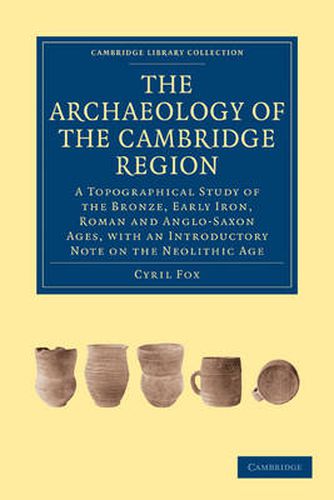Readings Newsletter
Become a Readings Member to make your shopping experience even easier.
Sign in or sign up for free!
You’re not far away from qualifying for FREE standard shipping within Australia
You’ve qualified for FREE standard shipping within Australia
The cart is loading…






Sir Cyril Fox (1882-1967) was an archaeologist and later Director of the National Museum of Wales and President of the Museums Association. Having entered Magdalene College, Cambridge as a mature student, his first year dissertation was judged to be more suitable as a PhD thesis, which resulted in him progressing straight to his PhD. His doctoral thesis, reissued here, transformed archaeological thought when it was first published in 1923. In it Fox pioneered the geographical approach to analysing ancient settlement patterns, linking the expansion of human settlement in the Cambridge area from the Neolithic era to the Anglo-Saxon period with favourable environmental conditions. His thesis emphasised the importance of treating archaeological finds as clues to past human settlement instead of being the main focus for archaeological analysis. This approach became the methodological framework for later environmental and landscape archaeology.
$9.00 standard shipping within Australia
FREE standard shipping within Australia for orders over $100.00
Express & International shipping calculated at checkout
Sir Cyril Fox (1882-1967) was an archaeologist and later Director of the National Museum of Wales and President of the Museums Association. Having entered Magdalene College, Cambridge as a mature student, his first year dissertation was judged to be more suitable as a PhD thesis, which resulted in him progressing straight to his PhD. His doctoral thesis, reissued here, transformed archaeological thought when it was first published in 1923. In it Fox pioneered the geographical approach to analysing ancient settlement patterns, linking the expansion of human settlement in the Cambridge area from the Neolithic era to the Anglo-Saxon period with favourable environmental conditions. His thesis emphasised the importance of treating archaeological finds as clues to past human settlement instead of being the main focus for archaeological analysis. This approach became the methodological framework for later environmental and landscape archaeology.